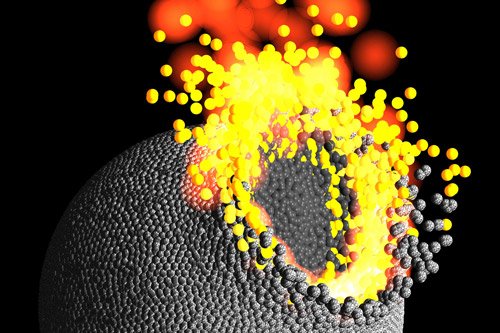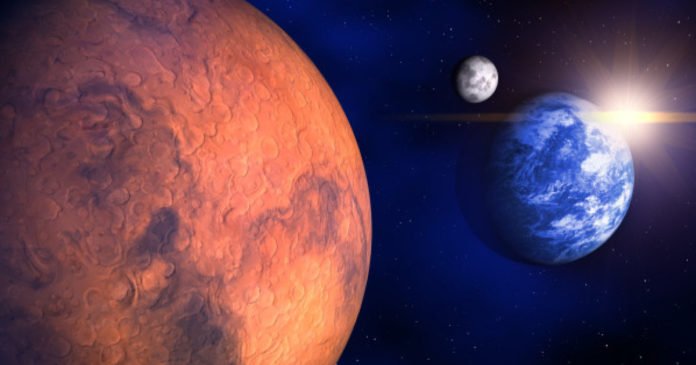Planets grow by the accumulation of particles by gravitationally attracting matter. In this process, the material gets lost as well as gained. Similarly, massive planetary bodies hit at several kilometers and generate substantial heat. Thus, they produced magma oceans and temporary atmospheres of vaporized rock.
When the planets grow their size, they tend to have a weak gravitational attraction to hold an inclement silicate atmosphere. This continuous loss of this vapor envelope during continued collisional growth causes the planet’s composition to change substantially.
Dr. Remco Hin from the University of Bristol said, “We have provided evidence that such a sequence of events occurred in the formation of the Earth and Mars, using high-precision measurements of their magnesium isotope compositions.”

Image credit: Philip J. Carter
“Magnesium isotope ratios change as a result of silicate vapor loss, which preferentially contains the lighter isotopes. We estimated that more than 40 percent of the Earth’s mass was lost during its construction.”
“This cowboy building job, as one of my co-authors described it, was also responsible for creating the Earth’s unique composition.”
Through this research, scientists wanted to know about the origin of distinctive, volatile poor compositions of planets.
Scientists examined the samples of the Earth and meteorites from Mars and the asteroid Vesta. For this, they used their newly developed technique to acquire precise measurements of magnesium isotope ratios than previously obtained.
They found:
- Earth, Mars, and asteroid Vesta have distinct magnesium isotope ratios from any plausible nebula starting materials.
- The isotopically heavy magnesium isotope compositions of planets identify substantial (~40 percent) mass loss following repeated episodes of vaporization during their accretion.
- This slipshod construction process results in other chemical changes during growth that generate the unique chemical characteristics of Earth.
Dr. Hin added, “Our work changes our views on how planets attain their physical and chemical characteristics.”
“While it was previously known that building planets are a violent process and that the compositions of planets such as Earth are distinct, it was not clear that these features were linked.”
“We now show that vapor loss during the high-energy collisions of planetary accretion has a profound effect on a planet’s composition.”
“This process seems common to planet building in general, not just for Earth and Mars, but for all planets in our Solar System and probably beyond, but differences in the collision histories of planets will create a diversity in their compositions.”
Journal Reference
- Hin, R. C., Coath, C. D., Carter, P. J., Nimmo, F., Lai, Y., E., P. A., Willbold, M., Leinhardt, Z. M., Walter, M. J., & Elliott, T. (2017). Magnesium isotope evidence that accretional vapour loss shapes planetary compositions. Nature, 549(7673), 511-515. DOI: 10.1038/nature23899
